Morning glory in the photo
In our time, what kind of exotic plants you will not see in summer cottages. But all this exotic is not for everybody, because so many beautiful compositions and flower beds can be created from the plants we are used to, in particular, from the morning glory.
Content:
- Variety of shapes
- Origin and application
- Morning dawn flower
- Use in green architecture
- Liana care and reproduction
- Pests and diseases
Variety of shapes
Ipomoea, which belongs to the bindweed family, is very diverse. In nature, there are about 500 species of this vine. There are 25 known cultivars so far, but every year their number is increasing. They attract with their extraordinary beauty and wonderful names: Giselle, Crimson Caprice, Scarlett o Hara, Flying Saucer, Blue Star, Blue Sky, Night, Flying Saucers, Moonflower, Morning Radiance, Serenade - these are just a few of the names.
Among the representatives of the genus there are both annual and perennial species, both garden and indoor. Most often, it is the lianas that are grown, as they beautifully braid the adjacent territories. But there are also herbaceous shrubs that look no less impressive.
The varieties are distinguished by the size and shape of the leaves and flowers, as well as their color. Generally, Ipomoea is characterized by heart-shaped leaves, but another form is also found.
Origin and application
Came morning glory to us from the tropical regions of America. For decorative purposes, the Japanese began to grow morning glory. Later, the Chinese began to use the vine as a medicinal plant, using the seeds as a laxative. Certain types of morning glory can even make up the diet of a vegetarian, but you should not get carried away, since this plant is still considered poisonous.
Morning dawn flower
The morning glory in the photo looks very impressive, bright flowers will not leave anyone indifferent, and the pleasant coolness and shade of the gazebo, which is braided by this vine, will attract lovers of outdoor recreation.
This flower is very unpretentious, tenacious, grows quickly and does not require special attention to itself.
The morning glory plant in the photo always looks bright, especially if several of its species are planted with different color of flowers: crimson, purple, orange, white, blue, blue, pink, lilac, indigo, chocolate, with white and blue stripes. The most common is the indigo morning glory; it looks the most elegant among other brethren. The flowers themselves can be simple or terry, large (up to 20 centimeters in diameter) or small, but they all resemble multi-colored gramophones in their appearance.
Ipomoea flowers react to sunlight, so they open up with the first rays of the sun. Due to this property, the morning glory is called the morning fairy and the flower of the morning dawn. But in the second half of the day, the flowers close in buds so as not to open again: they bloom for only one day, replacing each other. If the weather is cloudy all day, then morning glory will not close its flowers throughout the day.
This beauty blooms from the beginning of summer until the onset of the first frost, attracting passers-by with its charm.
Use in green architecture
Ipomoea translated from Greek means worm-like. This is the name of the vine for its ability to quickly braid the support and penetrate into any cracks.
Under favorable conditions, morning glory grows strongly and densely, creating a single canvas of stems, flowers and leaves. Ipomoea reaches a height of three meters.In addition, its advantage is that it grows very quickly and is able to hide all unsightly areas.
If you set the required format with the wire, you can get a beautiful floral arrangement. Any post or dry tree will suit her as a support. She will braid everything that gets in her way, forming an intricate pattern and covering your yard with a flowering screen. You can make a green corridor from it near the entrance to the house, a hut or a green figure. Morning glory will help bring all your creative ideas to life.
If you wish, you can use the vine to form a green carpet that looks very impressive.
Liana care and reproduction
This plant can be grown not only in open groundbut also in flower pots. If you use various top dressing, especially nitrogen, you can get very dense foliage, but there will be few flowers. Therefore, it is often not worth fertilizing the vine.
To make your morning glory grow as beautiful as in the photo, choose a sunny, windless place with loose and humus-rich soil for planting. The shoots of the plant break from the wind. True, if the vine is watered, then it will quickly grow new stems.
With a lack of light, you can hardly admire the flowers of the morning glory: it most likely will not bloom. With a lack of moisture, the flowers will be small. But waterlogging the soil is also undesirable. In no case should there be stagnation of water in the soil: the plant may die from decay.
Most often, morning glory is propagated by seeds. But it is possible to use cuttings and layering.
Pests and diseases
Pests and diseases are capable of spoiling the amazing beauty of vines. Therefore, they should be dealt with with the help of special solutions. Most often, spider mites, whiteflies and aphids can be found on morning glory.
If you give the liana a piece of your attention, then in gratitude it will give you its delightful flowers.



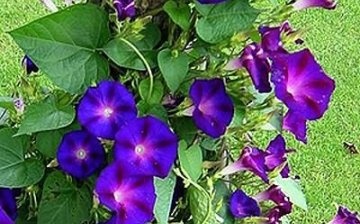
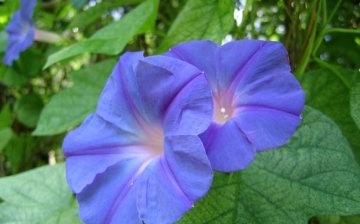
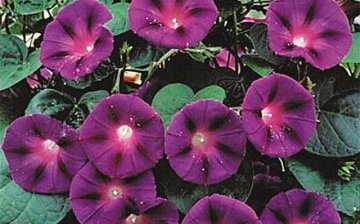
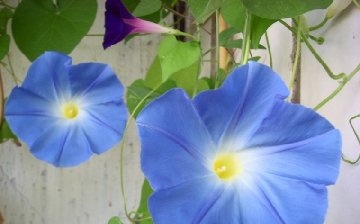




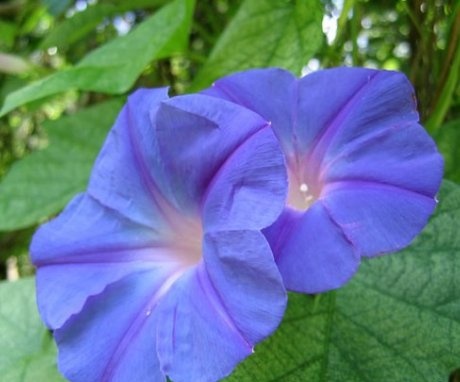
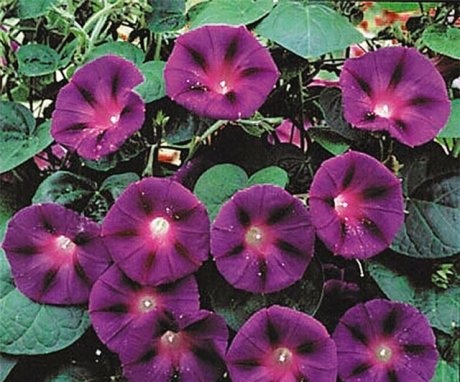
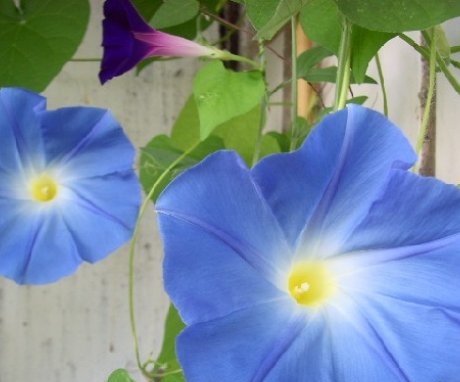
If this morning glory has a laxative effect, then how do vegetarians consume dishes from this plant? They will not get off the toilet then, according to the description. This plant can be used to clear the stomach.